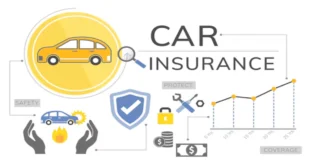The Ultimate Guide to Import Cars Insurance: Everything You Need to Know
Owning an imported car can be a dream come true for many automobile enthusiasts. These vehicles often boast superior engineering, unique designs, and high-performance capabilities that make them stand out. However, importing a car comes with its own set of challenges, one of the most critical being insurance. Getting the right insurance for an imported car can be complex, but it is essential to protect your investment.
This guide delves into the world of import car insurance, providing everything you need to know about insuring imported vehicles, the challenges involved, and tips to secure the best policy.
What Is Import Car Insurance?
Import car insurance is a specialized policy designed to cover vehicles that have been imported into your country. Unlike standard car insurance policies, this type of insurance takes into account the unique factors associated with imported vehicles, such as their origin, modifications, and market value.
Imported cars can fall into two main categories:
- Grey Imports: Vehicles imported from other countries that do not adhere to your country’s specifications or regulations.
- Parallel Imports: Cars imported directly from foreign manufacturers that meet local specifications.
Each type of import comes with its own insurance requirements and considerations.
Why Is Import Car Insurance Necessary?
Imported cars often come with higher risks and costs compared to domestic vehicles. Here’s why specialized insurance is necessary:
- Higher Value
Imported cars typically have a higher market value due to additional costs like shipping, customs duties, and taxes. Insurance policies need to reflect this increased value. - Unique Specifications
Many imported cars have unique parts or modifications that may not be readily available locally. This makes repairs more expensive, necessitating comprehensive insurance coverage. - Limited Repair Options
Not all mechanics are equipped to handle imported vehicles. Insurance for imported cars often accounts for these specialized repair needs. - Legal Requirements
Some countries mandate specific insurance coverage for imported vehicles to ensure compliance with local laws and regulations.
Challenges of Insuring Imported Cars
Insuring an imported car can be more challenging than insuring a locally purchased vehicle. Below are some common obstacles:
- Higher Premiums
Insurance premiums for imported cars are often higher due to their increased value and the cost of repairs. - Limited Insurers
Not all insurance providers offer policies for imported vehicles, which limits your options. - Valuation Issues
Determining the accurate value of an imported car can be tricky, especially for rare or modified models. - Compliance with Local Laws
Imported cars must meet local safety and emissions standards, which can impact insurance eligibility. - Longer Processing Times
The process of insuring an imported car can take longer due to additional paperwork and inspections.
Types of Coverage for Import Cars
When insuring an imported car, it’s essential to choose the right type of coverage. Here are the key options:
- Third-Party Liability Insurance
This basic coverage is often legally required. It covers damages caused to other people, vehicles, or property but does not cover your own car. - Comprehensive Coverage
Comprehensive insurance covers a wide range of risks, including theft, vandalism, and accidents. It is particularly important for high-value imported cars. - Agreed Value Insurance
For rare or classic imported cars, this type of policy ensures you are compensated based on an agreed value rather than the car’s depreciated market value. - Specialized Import Insurance
Some providers offer tailored policies for imported cars that include coverage for shipping, customs, and overseas accidents. - Modification Coverage
If your imported car has been modified, you may need additional coverage for the alterations.
Factors Affecting Import Car Insurance Premiums
Several factors influence the cost of insuring an imported car:
- Car’s Value
The higher the value of your car, the higher your insurance premiums. - Type of Import
Grey imports often attract higher premiums due to their non-compliance with local specifications, while parallel imports may cost less to insure. - Engine Size
Cars with larger engines are considered higher risk and usually have higher insurance costs. - Driver’s Profile
Your age, driving history, and experience can significantly impact your premiums. - Location
Where you live affects insurance costs, as areas with higher crime rates or accident frequencies are deemed riskier. - Usage
If your imported car is a daily driver, the premiums may be higher compared to a vehicle used occasionally or for show purposes.
How to Get Import Car Insurance
Securing the right insurance for your imported car requires careful planning. Here’s a step-by-step guide:
- Research Insurance Providers
Look for insurers that specialize in imported car coverage. Compare their policies, premiums, and reviews. - Gather Documentation
Prepare all necessary documents, including import papers, purchase receipts, and proof of compliance with local regulations. - Get the Car Valued
Have your car professionally valued to ensure accurate coverage. - Request Quotes
Obtain quotes from multiple insurers to find the best deal. Be sure to compare coverage options, not just premiums. - Check Policy Details
Read the policy terms carefully to understand what is covered and excluded. - Negotiate
Don’t hesitate to negotiate with insurers for better rates or additional coverage options. - Finalize the Policy
Once you’ve chosen the right insurer, finalize the policy and keep all documents safe.
Tips for Reducing Import Car Insurance Costs
Insuring an imported car doesn’t have to break the bank. Here are some tips to lower your premiums:
- Choose a Reliable Model
Opt for a car that is known for reliability and has readily available parts. - Install Security Features
Adding anti-theft devices or tracking systems can lower your insurance costs. - Bundle Policies
If you have other insurance policies, consider bundling them with the same provider for discounts. - Increase Your Deductible
A higher deductible can reduce your premiums, but make sure you can afford it in case of a claim. - Limit Usage
Reducing the mileage or using the car for specific purposes can lower premiums. - Maintain a Clean Driving Record
A good driving history can result in significant discounts. - Shop Around
Regularly compare insurance providers to ensure you’re getting the best deal.
Legal Considerations for Insuring Imported Cars
Importing a car can be an exciting venture, offering access to unique vehicles not available in your local market. However, navigating the legal landscape for insuring an imported car is crucial to avoid complications and ensure compliance with your country’s laws. Here’s a detailed breakdown of key legal considerations:
1. Customs Regulations
- Documentation: Verify that the car complies with all customs regulations in your country. This includes obtaining the necessary import documentation, such as a bill of lading, commercial invoice, and import declaration forms.
- Duties and Tariffs: Be prepared to pay any applicable customs duties or tariffs. These costs can vary significantly depending on the car’s value, origin, and category.
- Customs Clearance: Ensure the car undergoes a proper customs clearance process, which may require inspections or additional paperwork.
2. Safety and Emissions Standards
- Compliance with Local Laws: Most countries have specific safety and environmental standards that imported vehicles must meet. These can include crash safety requirements, emissions limits, and the presence of specific features like airbags or anti-lock brakes.
- Modifications: If the imported car doesn’t meet local standards, you may need to make modifications. This could include updating lighting systems, catalytic converters, or other components to align with local regulations.
- Certification: Obtain a certificate or proof that the car complies with the required standards, often issued by an authorized inspection body.
3. Registration
- Pre-Registration Requirements: Before registering your car, ensure you have all the necessary documents, including proof of purchase, customs clearance papers, and compliance certificates.
- Vehicle Identification Number (VIN): Some countries require the VIN to be checked or re-registered if it’s not in the standard format.
- Local DMV or Transport Authority: Register the vehicle with the appropriate local authority, which might involve additional inspections or fees.
4. Tax Obligations
- Import Taxes: Imported cars often incur specific taxes or fees, such as excise taxes, luxury vehicle taxes, or environmental levies. Research these costs beforehand to avoid surprises.
- Annual Taxes: Some jurisdictions impose higher annual taxes on imported vehicles due to their classification or engine specifications.
- Tax Exemptions: Check if your vehicle qualifies for exemptions or reduced tax rates, such as for classic or environmentally friendly cars.
5. Insurance Requirements
- Specialized Insurance Policies: Some insurers offer specific policies tailored to imported cars. These policies may consider the unique risks and repair costs associated with foreign vehicles.
- Valuation and Coverage: Imported cars, especially rare or luxury models, may require an agreed-value insurance policy to ensure adequate coverage in case of theft or damage.
- Proof of Compliance: Insurers may require proof of registration, safety compliance, and emissions standards before issuing a policy.
- Regional Restrictions: Research if your region has specific insurance laws or requirements for imported cars, such as higher premiums or mandatory coverage types.
Common Mistakes to Avoid
When insuring an imported car, avoid these common pitfalls:
- Underinsuring the Car
Ensure your policy covers the car’s full value, including import costs. - Ignoring Policy Exclusions
Understand what is excluded from your policy to avoid surprises during claims. - Delaying Insurance
Insure your car as soon as it arrives to avoid risks during transportation or storage. - Choosing the Cheapest Option
Low premiums often come with limited coverage. Prioritize value over cost.
Conclusion
Import car insurance is a vital component of owning an imported vehicle. While the process can be more complex and costly than insuring a domestic car, the right policy will provide peace of mind and protect your valuable investment.
By understanding the factors involved, exploring your options, and following the tips outlined in this guide, you can secure the best possible coverage for your imported car. Whether you’re importing a luxury sedan, a high-performance sports car, or a vintage classic, a well-chosen insurance policy will ensure you enjoy your ride without unnecessary worries.
Frequently Asked Questions (FAQs)
What is the difference between grey imports and parallel imports in car insurance?
Grey imports are vehicles that do not meet the local specifications or standards of the country they are imported into, making them more challenging to insure. Parallel imports, conversely, are cars directly imported from foreign manufacturers that already comply with local regulations, making them easier to insure.
Why are premiums higher for imported cars compared to domestic cars?
Insurance premiums for imported cars are higher due to their increased value, specialized repair needs, and the unavailability of parts locally. Additionally, these vehicles often require unique assessments to determine their coverage.
Can I insure my imported car with a standard car insurance policy?
While standard car insurance policies may provide basic coverage, they are not ideal for imported cars. Specialized insurance tailored to the unique needs of imported vehicles is recommended to ensure comprehensive protection.
How can I lower the cost of insuring my imported car?
To reduce premiums, consider installing security features, maintaining a clean driving record, choosing a reliable model, bundling insurance policies, and limiting the car’s mileage. Shopping around for quotes can also help you find the best deal.
Are modifications to my imported car covered by insurance?
Modifications can be covered if you include them in your insurance policy. Be sure to inform your insurer of any changes to the vehicle to ensure they are included in the coverage.
What documents are required to insure an imported car?
Typically, you’ll need the car’s import papers, purchase receipt, registration documents, proof of compliance with local regulations, and an appraisal of the vehicle’s value. Providing complete documentation will help expedite the insurance process.
READ ALSO: 1966 Round 50-Cent Coin: A Treasure from Australian History
 Touch Blog
Touch Blog



